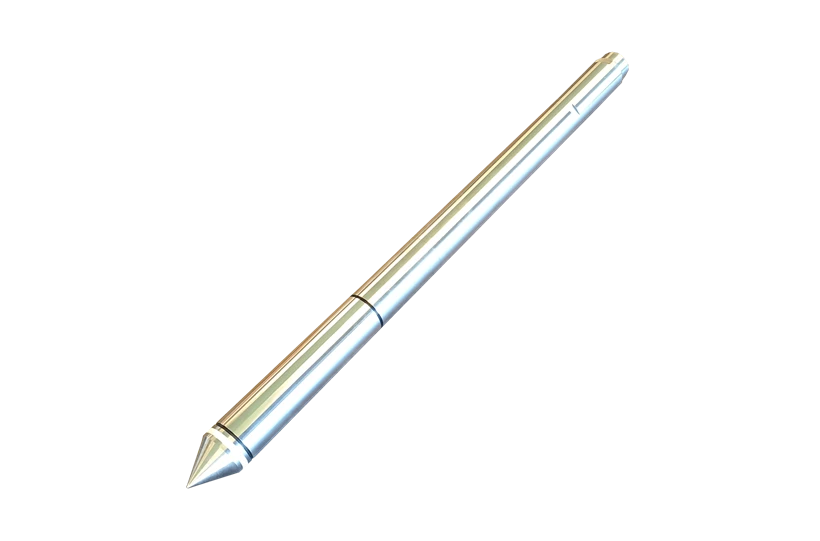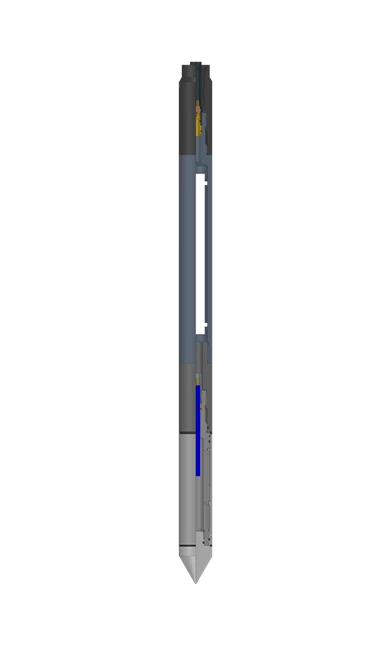

The Geomagnetic module can be used to detect anomalies in the magnetic field that could indicate the presence of a large mass of ferromagnetic material in the soil. Its range is a radius of approximately 2 metres.
A magnetometer is a scientific instrument used to measure the strength and/or direction of the magnetic field. A mass of ferromagnetic material creates a detectable disturbance in this magnetic field. This magnetic anomaly produces a weak alternating magnetic field that is detected by the magnetometer in the Geomagnetic module. It's very useful for:
Geomagnetic module details
The Geomagnetic module can be housed behind a dummy tip or behind a 15 cm2 CPT cone made of a high grade non-magnetic steel. It consists of a non-magnetic housing and has a standard tapered thread on top for connection to the string of CPT-sounding tubes. A “North” marking can be found on the exterior of the housing (Y-axis). The fluxgate sensor in XYZ direction enables to determine the position and orientation of an object. A built-in bidirectional inclinometer in line with the XY sensors with a measuring range of +/-25° (accuracy better than 0.1°) allows for determination of the orientation of the magnetic field.
This product delivers accuracy better than 0,5% of the full scale (FS) and a resolution better than 5nT (10nT for the 250,000 nT version).
| Geomagnetic module | |
|---|---|
| Sensor | 3 Axis Magnetometer |
| Mag. Resolution | 5 nT (10nT for the 250,000 nT version) |
| Measuring range | 100,000 nT or 250,000 nT |
| Sensitivity | 1nT |
| Length of the magnetometer module (excl. cone or dummy tip) | 350 mm | 14 in |
| Length in combination with a dummy tip | 500 mm | 20 in |
| Length in combination with a non-magnetic S15 type (piezo-)cone | 750 mm | 30 in |
| Diameter | 44mm | 1.75 in |
| Resolution in Z-axis direction | 10 mm | 0.4 in |

Need advice choosing the right product for your application? Our specialist Sven is happy to help.